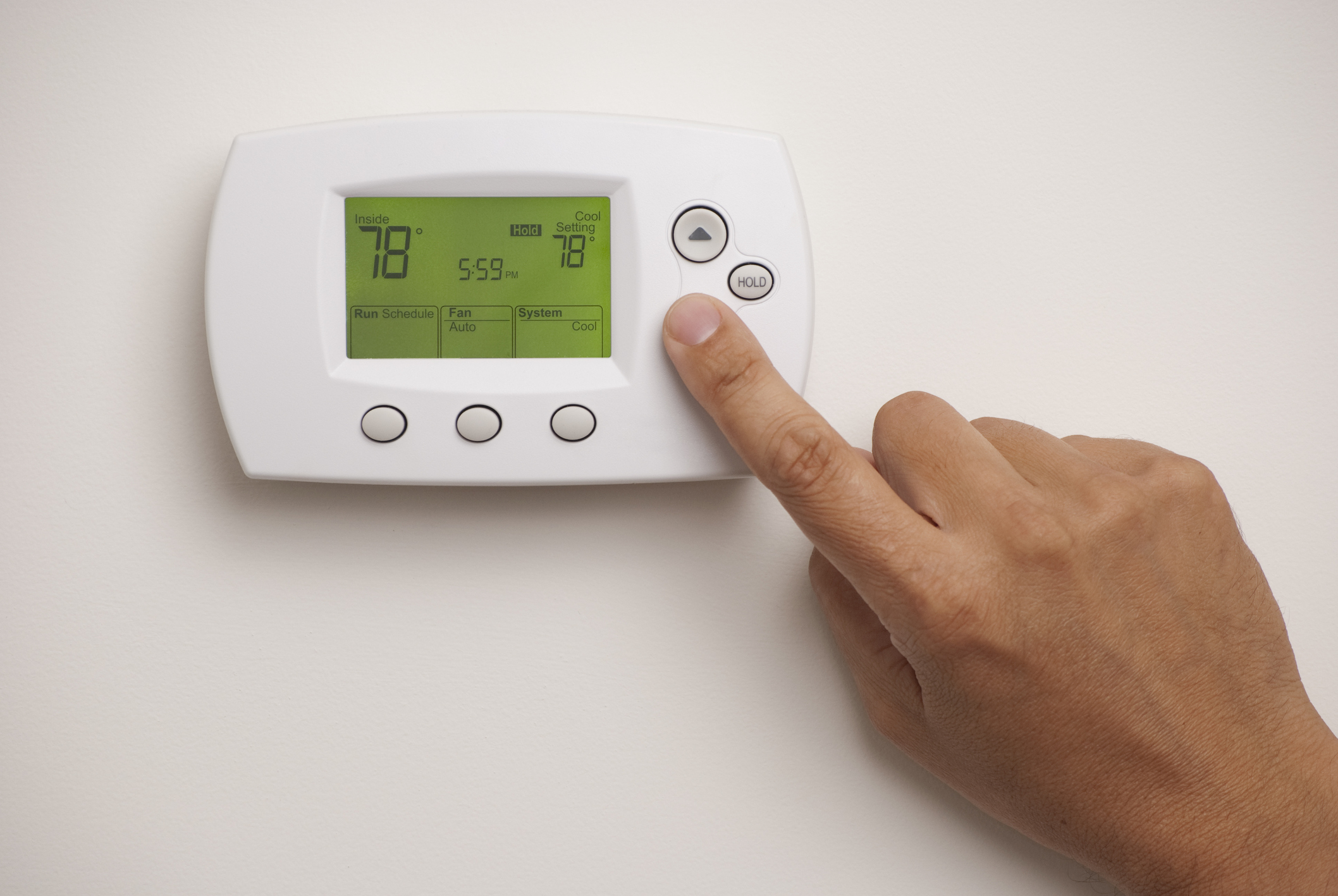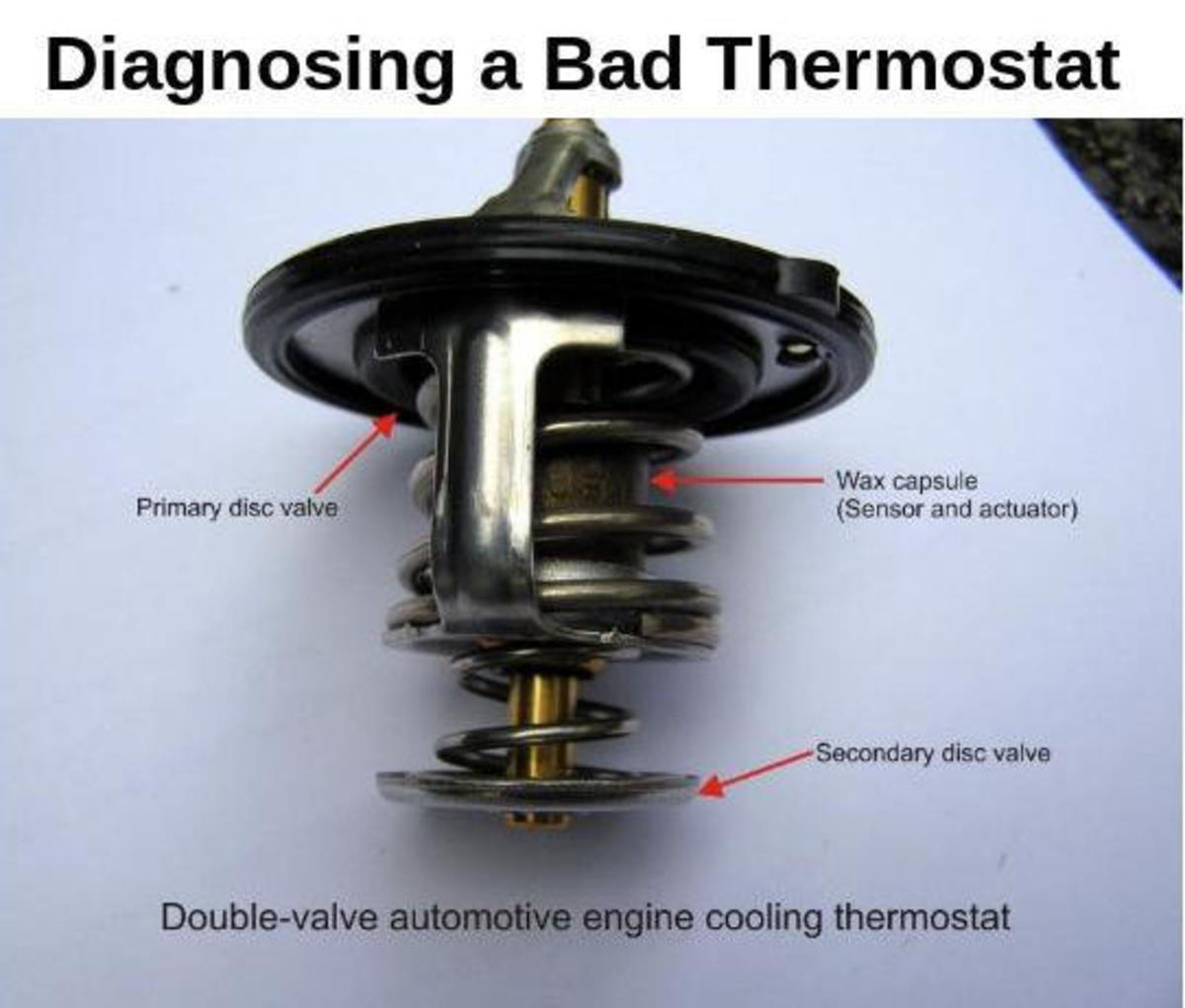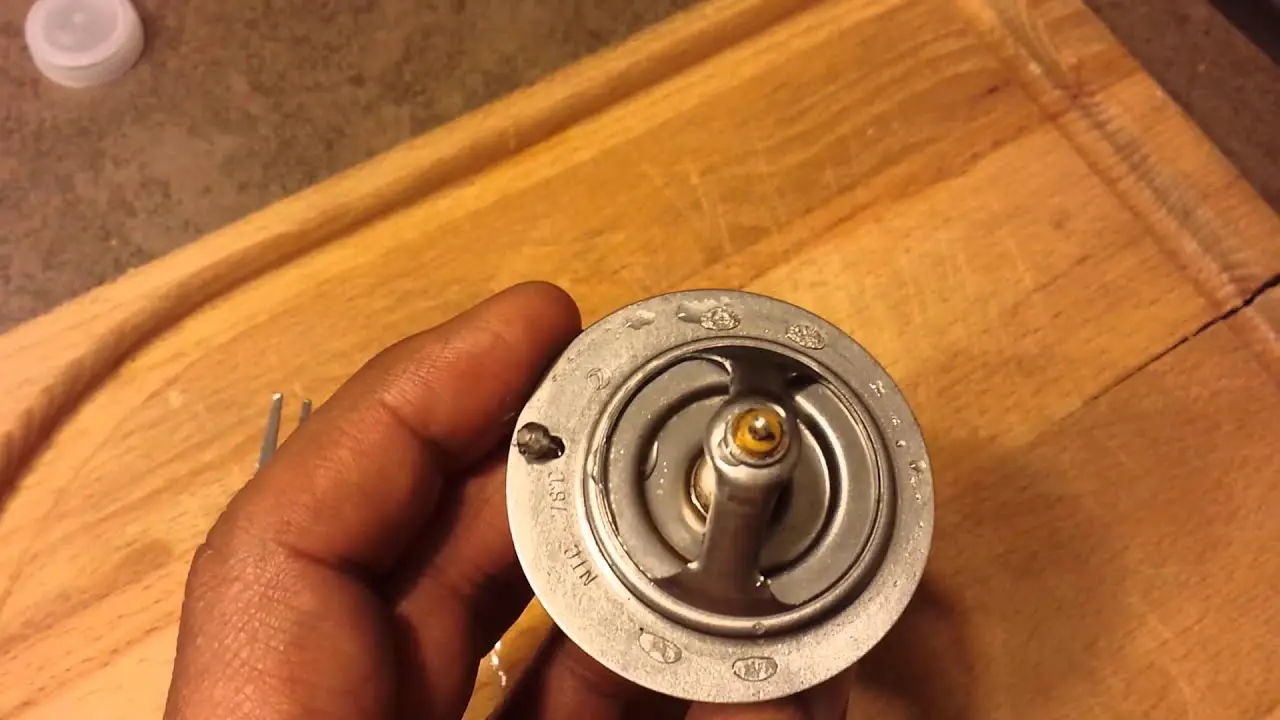Check Best Thermostat Pricing in Amazon
** As an Amazon Associate, I earn from qualifying purchases.
A bad thermostat can cause various issues in your home. It can affect heating and cooling efficiency.
To check if your thermostat is bad, follow these steps. The thermostat is a crucial part of your HVAC system. It ensures your home stays at a comfortable temperature. But, like any device, it can malfunction. Understanding the signs of a bad thermostat can save you time and money.
It can also prevent further damage to your HVAC system. This guide will help you identify if your thermostat is faulty and explain simple checks you can do yourself. Knowing these signs will allow you to act quickly and maintain a cozy home environment.
Signs Of A Faulty Thermostat
Understanding the signs of a faulty thermostat can save you a lot of trouble. A malfunctioning thermostat can lead to inconsistent temperatures and high energy bills. Recognizing these signs early can help you take action before the problem escalates.
Temperature Fluctuations
One of the most common signs is temperature fluctuations. If your home feels too hot and then suddenly too cold, the thermostat might be the issue. A stable thermostat should maintain a consistent temperature. Frequent changes indicate a problem.
Unresponsive Controls
Another sign is unresponsive controls. If you adjust the thermostat but the temperature doesn’t change, there is likely an issue. The device should respond immediately to your inputs. Unresponsive controls suggest it needs repair or replacement.
Initial Checks
Before you replace your thermostat, it’s important to perform some initial checks. These steps can help you determine if your thermostat is faulty. Simple checks can save you time and money.
Power Supply
First, check if your thermostat is receiving power. Make sure the circuit breaker isn’t tripped. Also, ensure the batteries are fresh and properly installed. A lack of power can make the thermostat seem faulty. Verify power before moving on to other checks.
Display Screen
Next, inspect the display screen. A blank screen can indicate a problem. Check for any error messages or unusual symbols. Sometimes, a reset can fix minor display issues. Look for a reset button or follow the manufacturer’s instructions to reset.
Inspect Wiring
Inspecting the wiring of your thermostat is crucial. Faulty wiring can cause many issues. Let’s dive into how to check the wiring. Look for loose connections or corroded wires. These problems can be easy to fix but can cause big issues if ignored.
Loose Connections
Loose connections can lead to your thermostat not working. Check each wire connection. Make sure all wires are secure. Tighten any loose screws. Loose wires can cause intermittent issues. This can make diagnosing the problem hard.
Corroded Wires
Corroded wires can stop your thermostat from working. Look for green or white buildup on the wires. This is a sign of corrosion. Clean the wires with a small brush. Replace any wires that are too corroded. Corrosion can cause poor connections. This impacts the thermostat’s performance.

Credit: www.gopreferred.com
Test Settings
Checking if your thermostat is bad involves testing its settings. This includes switching between heat and cool modes. Properly testing these settings will help identify if the thermostat is faulty. Follow these steps to check each mode.
Heat Mode
First, switch your thermostat to the heat mode. Set the temperature higher than the current room temperature. Listen for a click sound. This indicates the thermostat is sending a signal to the heating system. If the heater does not turn on, the thermostat might be faulty. Wait a few minutes to ensure the heater has enough time to start. If the heater still does not activate, further investigation might be needed.
Cool Mode
Next, switch your thermostat to the cool mode. Set the temperature lower than the current room temperature. Listen for a click sound. This signals the thermostat is sending a signal to the cooling system. If the air conditioner does not turn on, the thermostat might be bad. Allow a few minutes for the air conditioner to start. If it remains off, consider checking other components or consulting a technician.
Check Batteries
To check if your thermostat is bad, start with the batteries. Many problems arise from weak or dead batteries. Checking and replacing the batteries is a simple task. It can help you determine if this is the issue.
Battery Life
Batteries in your thermostat can last from one to two years. How often you use the thermostat affects battery life. Regular checks can help you catch battery issues early.
Replacement Procedure
Replacing thermostat batteries is easy. Follow these steps:
First, turn off the thermostat. This prevents any electrical issues. Next, remove the thermostat cover. You may need a screwdriver for this.
Locate the batteries inside. Remove the old batteries. Pay attention to the battery orientation.
Insert the new batteries in the same orientation. Replace the thermostat cover. Turn the thermostat back on. Check if it works properly.

Credit: discover.hubpages.com
Thermostat Calibration
Thermostat calibration is a critical aspect of ensuring your HVAC system operates efficiently. An improperly calibrated thermostat can lead to inaccurate temperature readings, making your home too hot or too cold. This not only affects comfort but also increases energy bills. Understanding how to check and adjust your thermostat can save you time and money.
Check Best Thermostat Pricing in Amazon
** As an Amazon Associate, I earn from qualifying purchases.
Temperature Accuracy
Accurate temperature readings are the first step in determining if your thermostat is calibrated correctly. Start by placing a reliable thermometer near your thermostat. Wait for about 15 minutes to ensure both the thermometer and thermostat have stabilized.
Compare the readings. If they differ by more than a degree or two, your thermostat may need calibration. Accuracy is vital as even minor discrepancies can make a significant difference in your comfort and energy consumption.
Adjustment Steps
Adjusting your thermostat is usually straightforward. Begin by consulting your thermostat’s manual; it often provides specific instructions for calibration. Most thermostats have a calibration screw or dial that allows you to fine-tune the temperature settings.
- First, remove the thermostat cover to access the internal components.
- Next, locate the calibration screw or dial.
- Turn the screw or dial slightly to adjust the temperature reading.
After making adjustments, wait for another 15 minutes and recheck the temperature. Repeat the process until the thermostat reading matches your thermometer. Proper calibration can enhance your HVAC system’s efficiency and ensure a comfortable living environment.
Have you ever struggled with an inaccurate thermostat? Share your experiences and tips in the comments below. Your insights could help others facing similar challenges!
Professional Help
Detecting a faulty thermostat can prevent bigger issues. Check for irregular temperature readings or inconsistent heating/cooling. Professional help ensures accurate diagnosis and repair.
When it comes to troubleshooting a faulty thermostat, sometimes professional help is essential. While DIY fixes can be tempting, certain issues require the expertise of a trained technician. Let’s explore when it’s time to call a professional and what to expect in terms of cost.When To Call A Technician
If you’ve tried basic troubleshooting steps and your thermostat still isn’t working, it’s time to call in a pro. A technician can diagnose the problem with specialized tools and knowledge. For example, if your HVAC system is cycling on and off frequently, a technician can determine if the issue lies with the thermostat or another component. Don’t wait until a minor problem becomes a major issue. Another sign you need a technician is inconsistent temperature readings. If your home feels hotter or colder than the thermostat indicates, there’s likely a deeper issue.Cost Considerations
Calling a technician can be a worthwhile investment. On average, a service call might cost anywhere from $75 to $200, depending on your location and the complexity of the issue. If parts need replacement, such as the thermostat itself, expect additional costs. A basic thermostat might cost around $20, while a smart thermostat can be $200 or more. Always ask for a detailed estimate before work begins. This ensures no surprises when the bill arrives. Don’t hesitate to seek a second opinion if the quote seems high. Is your thermostat acting up? Share your experiences in the comments and let’s see how we can help each other troubleshoot this common issue!Thermostat Replacement
Has your thermostat been acting up lately, making your home too hot or too cold? If so, it might be time for a thermostat replacement. Replacing a faulty thermostat can seem daunting, but it’s a straightforward task with the right guidance.
Choosing A New Thermostat
First, you need to choose the right thermostat for your home. Consider your heating and cooling system type. Is it a single-stage, multi-stage, or heat pump system? Knowing this will help you select a compatible thermostat.
Think about your needs. Do you want a basic programmable thermostat or a smart one with Wi-Fi capabilities? Smart thermostats offer more features like remote control via smartphone, energy usage reports, and integration with other smart home devices.
Read reviews and check ratings. Users’ experiences can provide insights into reliability and ease of use. Don’t forget to check if the thermostat comes with a warranty for added peace of mind.
Installation Guide
Once you have your new thermostat, it’s time to install it. Start by turning off the power to your heating and cooling system to avoid any electrical mishaps.
Remove the old thermostat. Take note of how the wires are connected. A handy tip is to take a picture of the wiring before you disconnect anything.
Next, connect the wires to your new thermostat. Most thermostats come with clear instructions and a wiring diagram. Follow these carefully. If you’re unsure, many manufacturers offer customer support or detailed online tutorials.
Secure the thermostat to the wall. Make sure it’s level and properly attached to avoid any operational issues.
Restore power to your system and test the new thermostat. Set the temperature and make sure your heating or cooling system responds accordingly.
Replacing a thermostat doesn’t require a professional if you follow these steps carefully. Have you ever replaced a thermostat yourself? Share your experience in the comments below. Your insights could help others who are facing the same issue.

Credit: www.youtube.com
Frequently Asked Questions
How Do You Diagnose A Bad Thermostat?
Check for overheating or underheating issues. Observe if the engine warms up too quickly or too slowly. Monitor fluctuating temperature readings. Inspect for coolant leaks around the thermostat housing. Test the thermostat by placing it in hot water and checking if it opens.
How Do I Test My Thermostat?
To test your thermostat, set it to a specific temperature and observe if your HVAC system responds accordingly. Use a thermometer to compare the thermostat’s reading with the room temperature. If there is a discrepancy, recalibrate or replace the thermostat.
How Do I Know If My Thermostat Needs To Be Replaced?
A thermostat may need replacement if it’s unresponsive, shows incorrect temperatures, or causes irregular heating or cooling. High energy bills or frequent short cycling are also signs.
Will Ac Run If The Thermostat Is Bad?
No, the AC won’t run if the thermostat is bad. A faulty thermostat can prevent the system from turning on.
Conclusion
Checking your thermostat can save money and prevent problems. Simple steps make it easy. Start by checking the settings. Test the system by raising or lowering the temperature. Listen for strange sounds. Feel for uneven heating or cooling. Replace batteries if needed.
If issues persist, consider professional help. Regular checks ensure your thermostat works well. Keep your home comfortable and efficient. Follow these tips and enjoy a well-regulated environment.
Check Best Thermostat Pricing in Amazon
** As an Amazon Associate, I earn from qualifying purchases.


